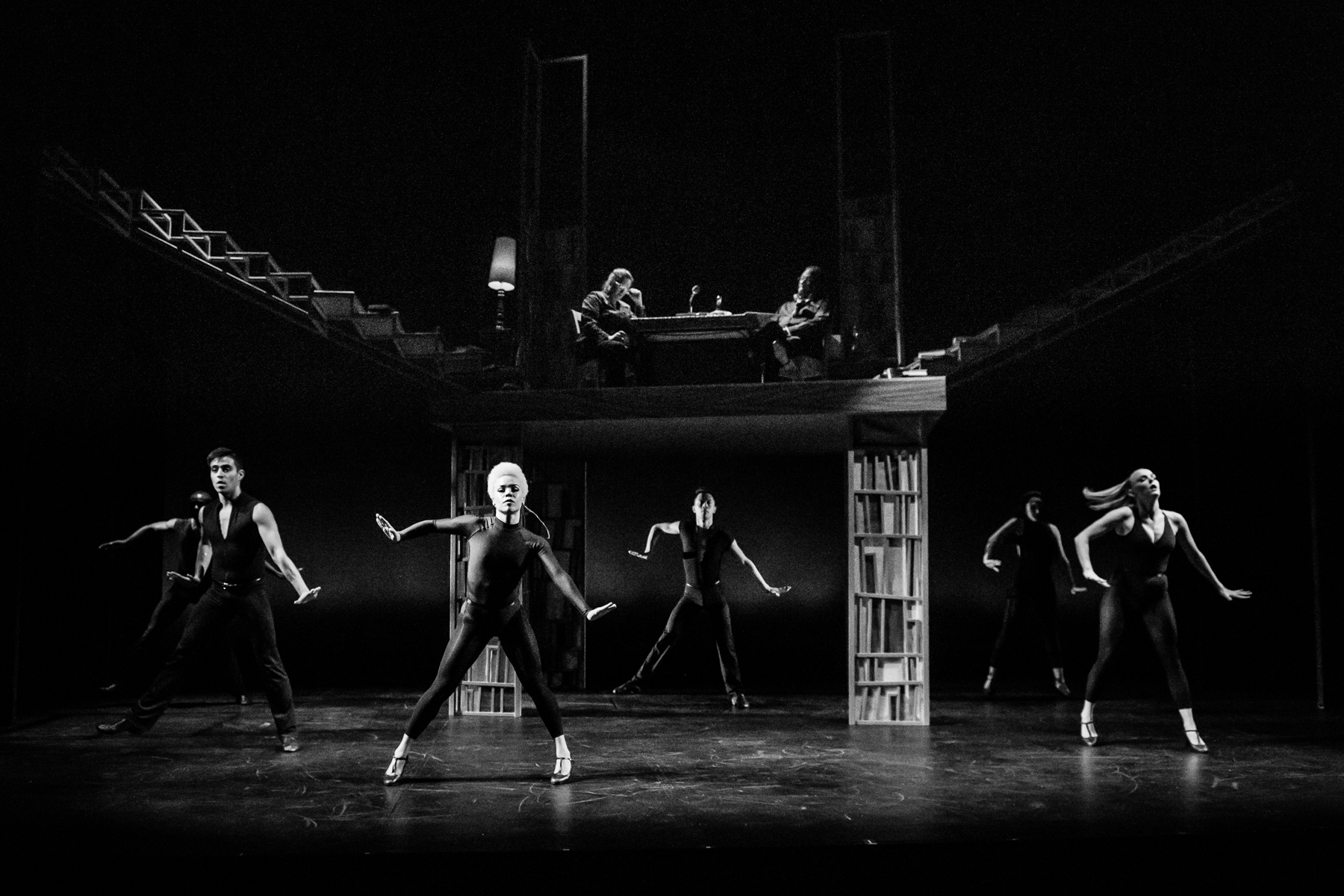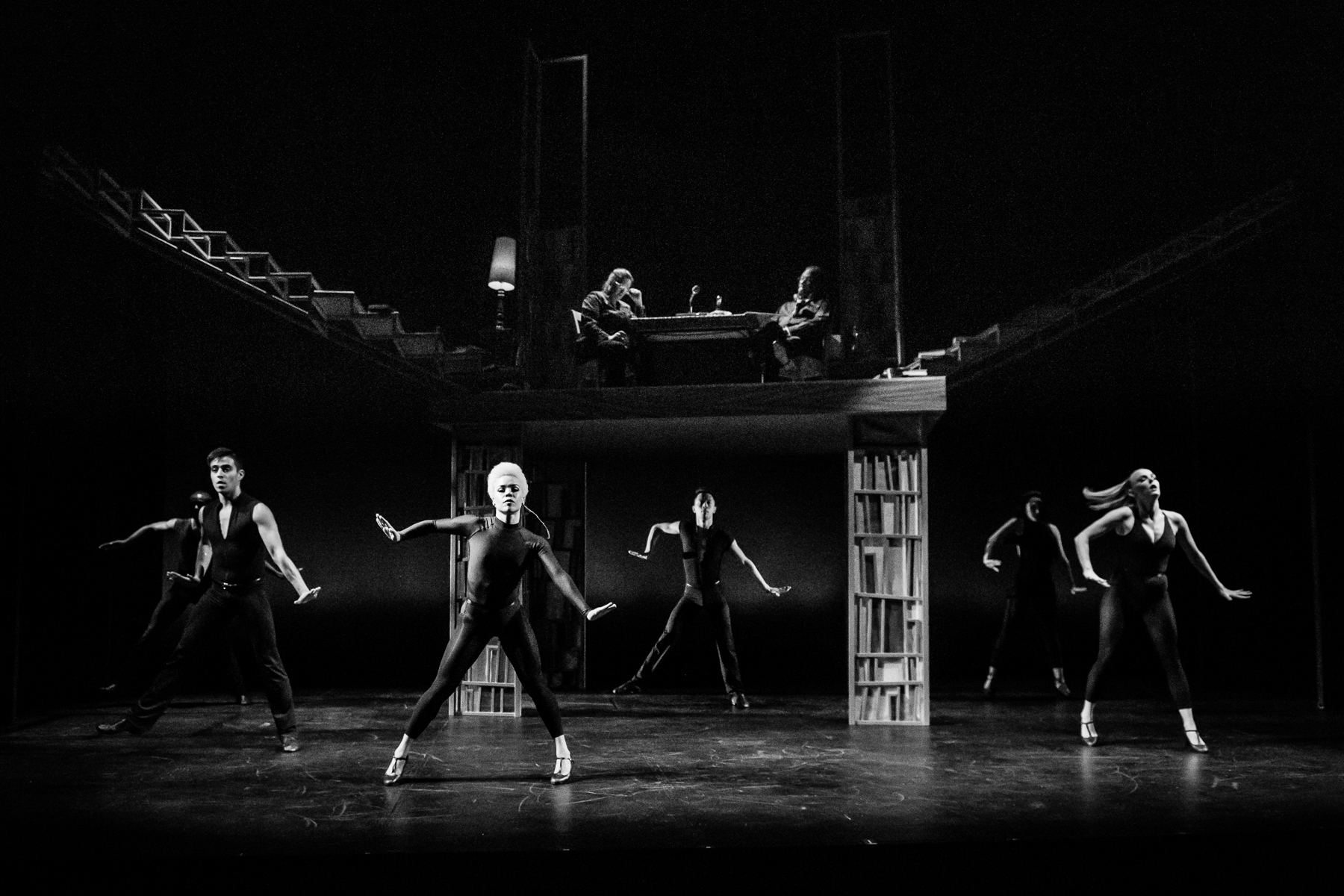In the middle of Black Lives Matter and new ideas about intersectionality and social justice, Spectrum Dance Theater’s artistic director Donald Byrd is asking us to consider an earlier discussion. In 1970, James Baldwin and Margaret Mead met in “A Rap on Race,” an hours-long conversation about their positions on race relations in the world at that time. Both were arguably at the height of their individual fame—Mead for her groundbreaking work as a cultural anthropologist, Baldwin as a powerful and radical author confronting the grim legacy of slavery. Their discussion, earnest, painful, and revealing, has been almost forgotten today, among all the other language generated about the topic. As part of Spectrum Dance Theater’s #RACEish season, Byrd is using Baldwin and Mead’s past encounter to consider the state of the present day.
Byrd has collaborated with dramatist Anna Deavere Smith on a distillation of the text that shows Baldwin and Mead both poetically and pragmatically. Alongside their duologue, Byrd has crafted dance sequences that take multiple cues from the text—not to replicate or illustrate their conversation, though it does resonate with their meanings as well as the sheer musicality of their voices. Additional music by Charles Mingus (The Black Saint and the Sinner Lady) reinforces the sense of the near past.
As well as choreographing the dance sequences, Byrd is speaking the part of James Baldwin. He had mostly stopped dancing in his own work by the time he came to Seattle to take on Spectrum, but he has previously appeared as a kind of theatrical interlocutor, and his portrayal of Baldwin is finely drawn. There are echoes of the man most of us know through video, particularly the baroque quality of some of his gestures, but it’s not a carbon copy. Likewise Julie Briskman as Margaret Mead gives an impression of the woman’s gravitas without mimicking her.
Briskman launches into her portrayal of Mead with the kind of delivery that reminds us she was an academic, accustomed to lecturing and being listened to. With her assertion that she is “northern” through and through, growing up in a house that had been a station on the underground railway, she sets herself up as a representative of her race, and by default Baldwin does the same. Although she begins with confidence, that seems to slip over time, as she becomes almost desperate to enlist Baldwin in her vision of a gradually evolving culture. He resists, frustrated by his own experiences of change, finally stymieing her when he says “I am not at home anywhere on this planet.”
Baldwin and Mead inhabit a platform raised above the stage floor with a table and chairs, while the dancing happens at ground level. Both the dancing and the dialogue have a close-quarters sense—Briskman and Byrd stay seated at the table as if it were a boxing ring and they were contenders for a prize. The dancers are also limited in their own space. The Leo K stage is relatively small, and the four pillars that support the platform overhead are another hindrance to lengthy traveling sequences or athletic jumping. Though we cycle through various partnerships among the dancers, the actors are a constant, pushing through a sense of weariness, and possibly inebriation, as their language becomes more pointed and emotional.
With limited dancing space, Byrd makes a virtue of necessity with much of his choreography, focusing on solos and duets. The partnering often has the sense of social dance amped up to a higher level, where everyone is working at the edge of their formidable physical skills. Mingus often rides the border between cool and hot, and Byrd’s dancers perform that same balancing act here. But despite their skills, dance takes a less singular position in A Rap on Race than in much of Byrd’s other work. The text is so compelling, and Briskman and Byrd do such a nuanced job with it, the choreography can sometimes feel less significant. The company’s technical level is as high as always, and their commitment onstage is equally powerful, but as duet followed duet, we were waiting for Baldwin and Mead to speak again.
Spectrum’s 2016 #RACEish season is using multiple approaches to examine the current day. Last February’s pair of concerts were a more aesthetic challenge, looking for the African-American elements in contemporary dance and music. A Rap on Race deals much more directly with our recent messy heritage. Next month the company presents a revival of Byrd’s controversial The Minstrel Show Revisited, which links the traditional oppression of slavery to contemporary violence against young black men—all designed to reignite public discussion about the aftermath of our most “peculiar institution.” A Rap on Race, Seattle Repertory Theater, Seattle Center, spectrumdance.org, $20-$40, 7:30 p.m. Thurs.-Sat., 2 p.m. Sun. Ends May 22.










